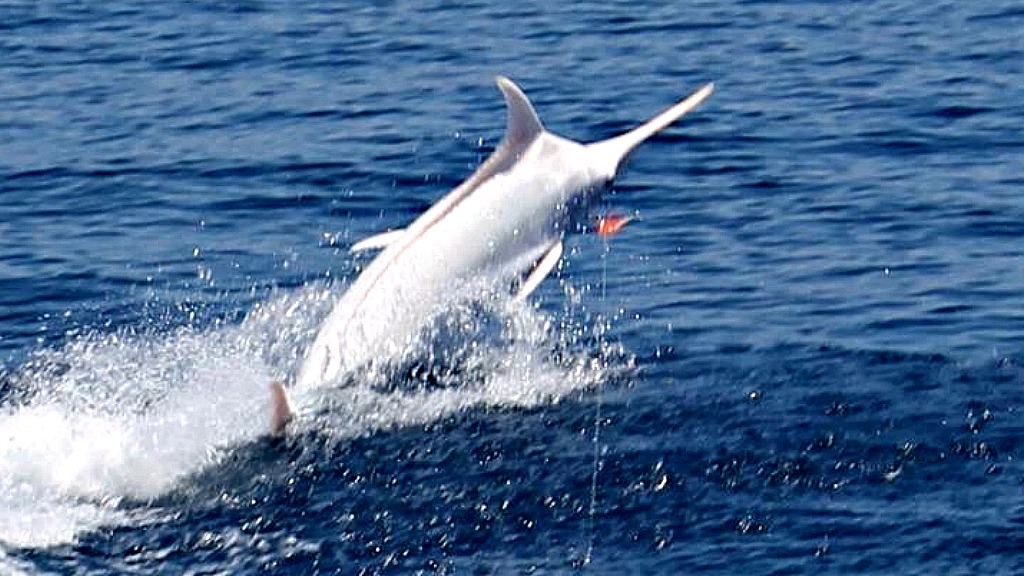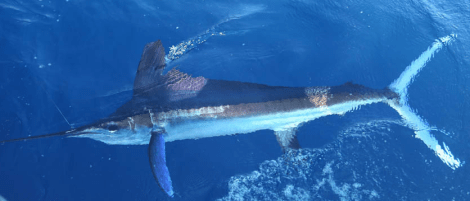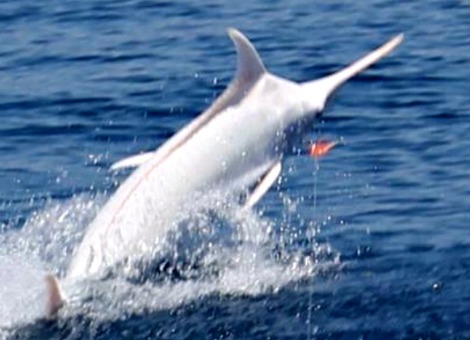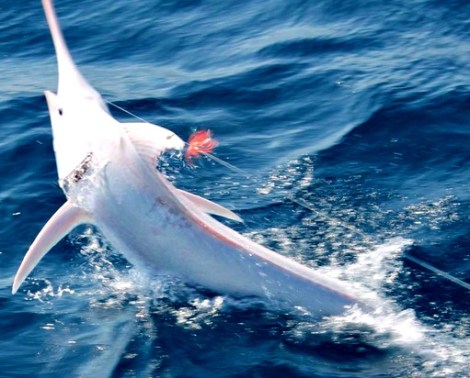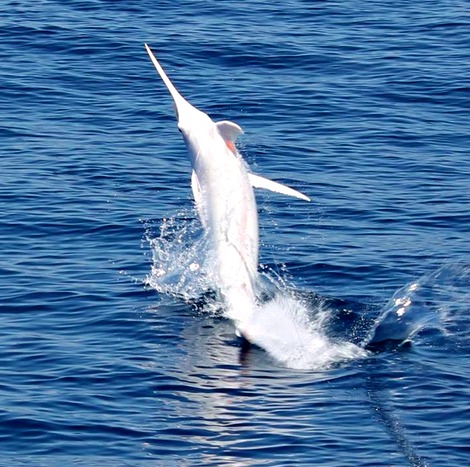In case you’re not intimately familiar with every type of marine life — and that’s OK; we know you have True Detective to watch — here’s a typical blue marlin. It’s similar to a swordfish, only its fin-mohawk (technical term) and upper half are blue:
So now you maybe get why seeing an albino blue marlin would be a big deal. The completely white creatures are super-rare, hence their nickname, “unicorn of the sea”:
And three fishers were lucky enough to spot one — they think — off the coast of Costa Rica. Capt. Juan Carlos Zamora, Carlos Espinoza Jimenez, and Roberto Salinas Hernandez of the Spanish Fly (hee) were sailing 20 miles off of Los Suenos when they caught and released the 300-pound albino blue marlin.
Hook Harmeling of Billfish Report contacted several billfish experts who all said this was likely the first time anyone’s photographed an albino blue marlin. According to the charter company, the International Game Fish Association and The Bass Federation both confirmed Harmeling’s guess.
Notes Grind TV, “It could be that the marlin was leucistic, with reduced pigmentation, and not a true albino lacking all pigmentation. But just about everyone is referring to the billfish as true or partial albino.” However, Marlin Mag is saying the IGFA has released a statement concluding its black eyes indicate it’s leucistic, not albino.
Albino or not, the creature is cool to see. Just make sure one doesn’t end up on your wall or on your plate — blue marlins are nearly endangered.

